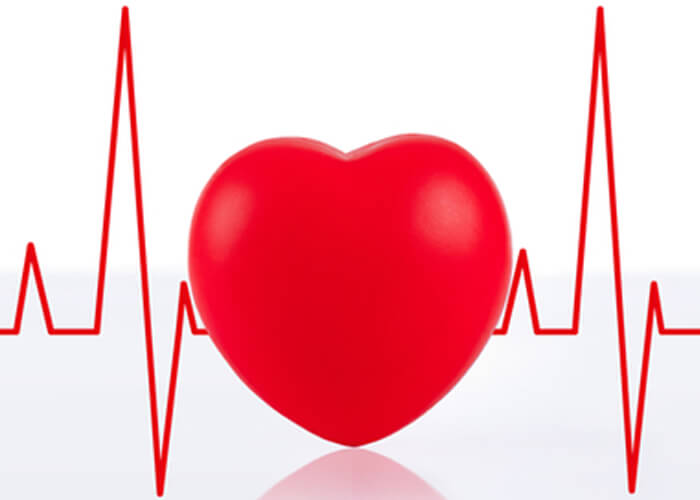Truck Driver Health: Symptoms Of A Heart Attack

In the past week, there have been a handful of headlines about truck accidents as a result of a heart attack. Drivers, you need to be aware of the symptoms and the things you can do to head-off a heart attack and how to prevent one altogether. Also, learn how to distinguish between a possible heart attack and heartburn.
Men’s Symptoms of a Heart Attack:
All men should be familiar with these heart attack symptoms:
- Chest pain or discomfort that can feel like uncomfortable pressure, fullness, squeezing or pain in the chest. It may last for more than a few minutes, or it can come and go.
- Discomfort or pain in other areas, such as one or both arms, the neck, jaw, back or stomach
- Shortness of breath, lightheadedness, nausea, or sweating
- Abdominal discomfort that may feel like indigestion
Chest pain is a classic male heart attack symptom, and men know it well. But they’re often clueless about other symptoms, experts say.
Women’s Symptoms of a Heart Attack:
These chest-related heart attack signs often appear in men, and many women get them, too:
- Pressure, fullness or a squeezing pain in the center of the chest, which may spread to the neck, shoulder or jaw;
- Chest discomfort with lightheadedness, fainting, sweating, nausea or shortness of breath;
But many women don’t have chest pain.
In the Circulation study, common female heart attack symptoms include:
- shortness of breath (57.9%)
- weakness (54.8%)
- unusual fatigue (42.9%)
Women also had these symptoms:
- Nausea
- Dizziness
- Lower chest discomfort
- Upper abdominal pressure or discomfort that may feel like indigestion
- Back pain
What to do if You Think You’re Having a Heart Attack:
Calling 911 is best, too, because emergency medical personnel can start treatment, such as oxygen, heart medications, and pain relievers, as soon as they arrive. They can also alert the hospital to begin preparations for tests and treatments.
While you’re waiting for an ambulance, here are other ways to help yourself or someone else having heart attack symptoms:
- The patient should chew and swallow an aspirin, if there is one on hand.
- Patient should stop all activity, lie still and try to remain calm.
Heartburn or Heart Attack?
Signs more typical of heartburn include:
- A sharp, burning sensation just below the breastbone or ribs.
- Pain generally does not radiate to the shoulders, neck, or arms, but it can.
- Pain usually comes after meals, when lying on the back, when exercising or when experiencing anxiety.
- Symptoms usually respond quickly to antacids.
- Rarely accompanied by a cold sweat.
Signs more typical of angina (severe pain in chest area) or heart attack include:
- A feeling of fullness, tightness, or dull pressure or pain generally in the center of the chest.
- The feeling of a belt being tightened around your chest
- Sudden chest pain or pressure that worsens
- Dizziness
- Pain may spread to the shoulders, neck, jaw or arms
- Pain often responds quickly to nitroglycerin
- Shortness of breath
- Often accompanied by a cold sweat
- Possible lightheadedness
If you have any pain that lasts for more than a few minutes or any warning signs of a heart attack, seek immediate medical attention. If there’s any confusion about whether your symptoms are heartburn or a heart attack, also seek immediate medical attention.
Many people have different acid reflux-related heartburn triggers, but most people have similar heartburn symptoms.
- A burning feeling in the chest just behind the breastbone that occurs after eating and lasts a few minutes to several hours.
- Chest pain, especially after bending over, lying down, or eating.
- Burning in the throat — or hot, sour, acidic or salty-tasting fluid at the back of the throat.
- Difficulty swallowing.
- Feeling of food “sticking” in the middle of the chest or throat.
- Heartburn may cause chronic cough, sore throat, or chronic hoarseness.
*Information taken from WebMD.
How to Help Prevent a Heart Attack
1. Quitting smoking.
2. Eating healthy. Avoid fatty foods, excess salt, and red meats.
3. Controlling high blood pressure and diabetes.
4. Ensuring regular exercise at least 30 minutes a day. Walking is most beneficial.
5. Preventing obesity. Doing all you can to maintain weight.
6. Choosing to live a healthy lifestyle.
7. Practicing meditation.
8. Doing regular relaxation and breathing exercises.
9. Undergoing periodic cardiac evaluations.
10. Including foods that are rich in anti-oxidants in your diet.
*Information taken from HealthyGuidance.org.